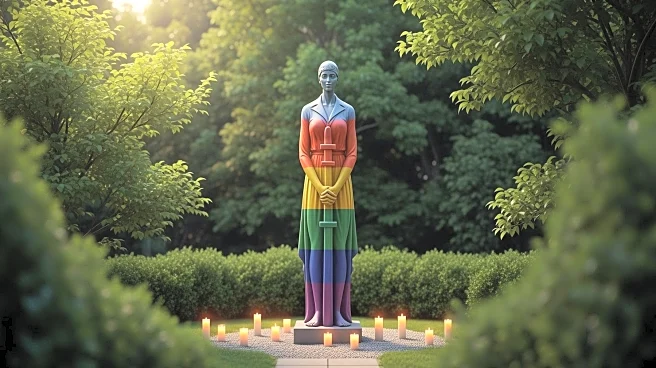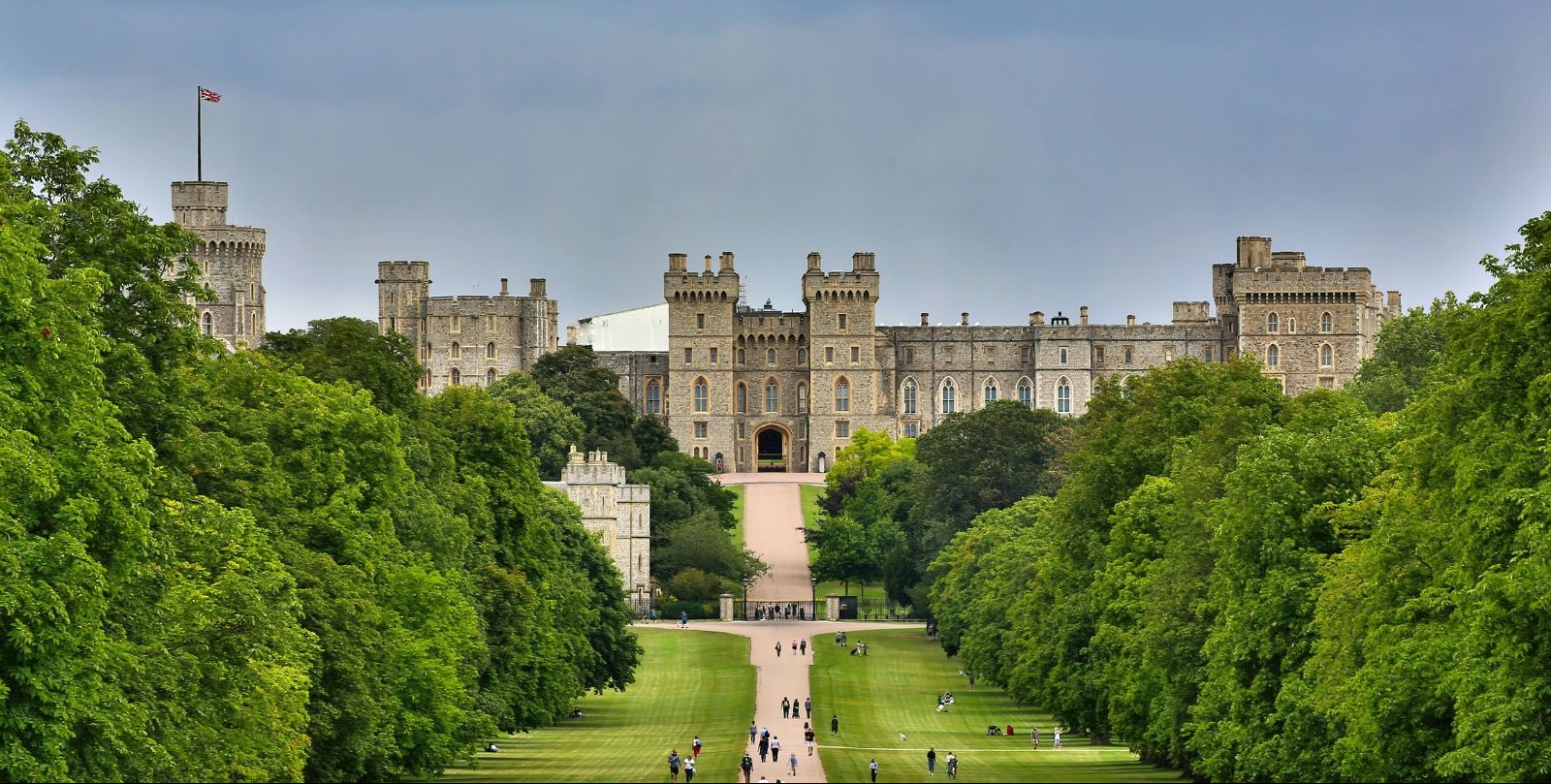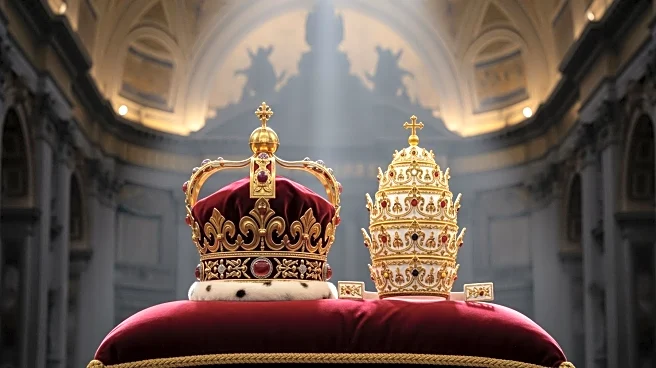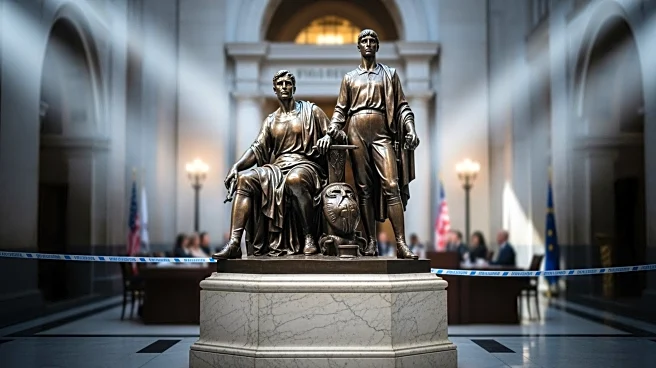What's Happening?
King Charles III has inaugurated a new memorial dedicated to LGBT military personnel at the National Memorial Arboretum in Staffordshire. This event marks the King's first official engagement in support
of the LGBT+ community. The memorial, named 'an opened letter,' honors those who served in the armed forces during a time when being gay was illegal, a ban that lasted until 2000. The sculpture, designed by the artist collective Abraxas Academy, symbolizes the struggles faced by LGBT veterans, many of whom were subjected to investigations, dismissals, and imprisonment. The unveiling follows a long campaign for recognition and reparations for those affected by the ban.
Why It's Important?
The unveiling of this memorial is significant as it acknowledges the historical injustices faced by LGBT military personnel and represents a step towards healing and recognition. It highlights the progress made in creating an inclusive environment within the armed forces. The memorial also serves as a reminder of the past, ensuring that the experiences of those affected by the ban are not forgotten. This development may encourage more veterans to come forward to seek reparations and support, fostering a broader understanding and acceptance of diversity within military and societal contexts.
What's Next?
The memorial is part of a broader initiative to address past injustices, including financial redress payments for affected veterans. The government and advocacy groups like Fighting With Pride continue to work on measures such as pardons for past convictions and the return of military honors. These efforts aim to provide justice and support to those who suffered under the ban. The memorial's presence may also inspire further discussions and actions towards equality and inclusion in the military and beyond.
Beyond the Headlines
The memorial's creation and the accompanying initiatives reflect a cultural shift towards acknowledging and rectifying historical wrongs against marginalized groups. It underscores the importance of institutional accountability and the ongoing need for policies that promote diversity and inclusion. The memorial also serves as an educational tool, ensuring that future generations understand the impact of discrimination and the value of embracing diversity.












